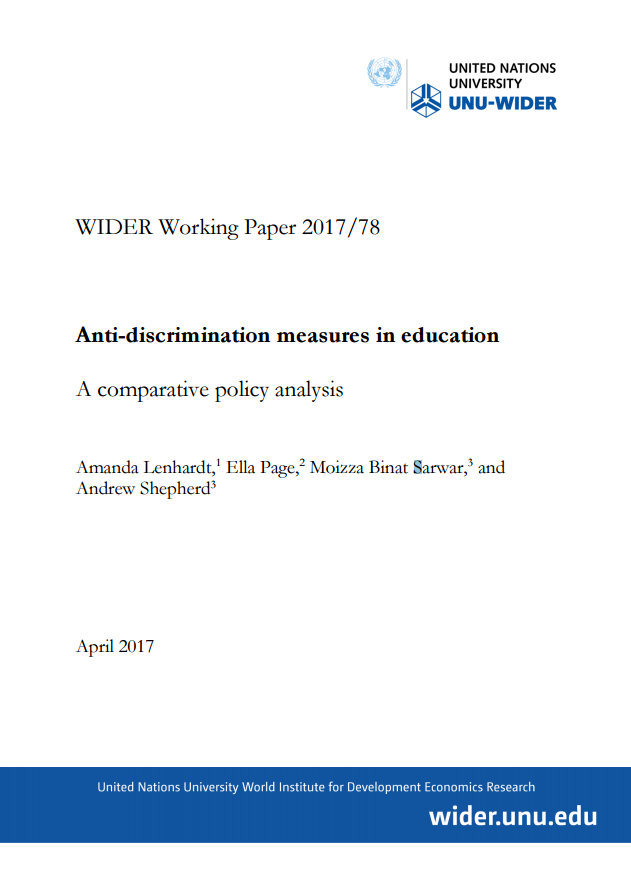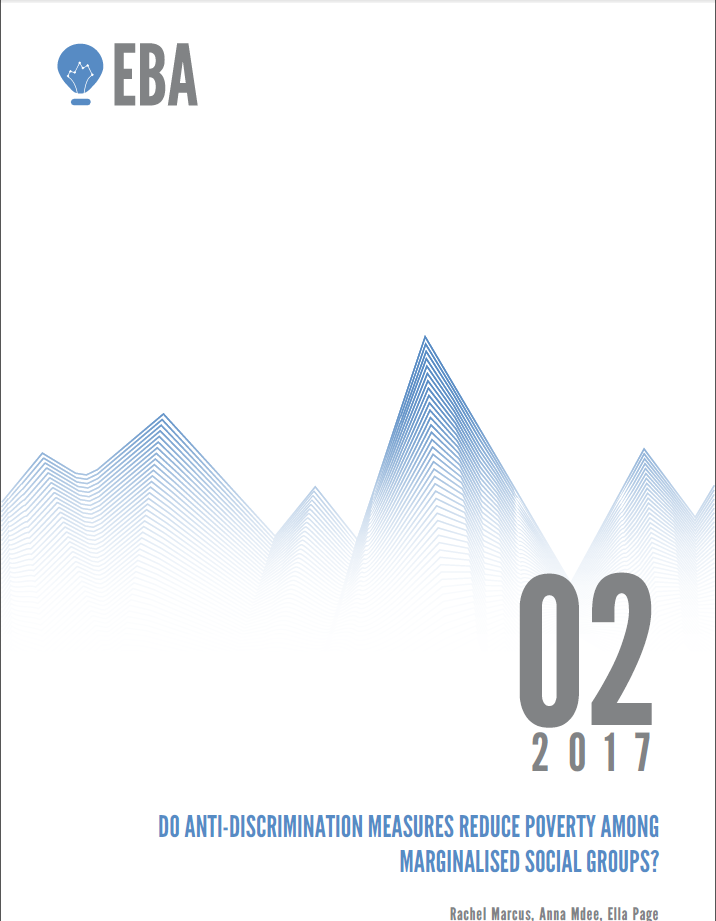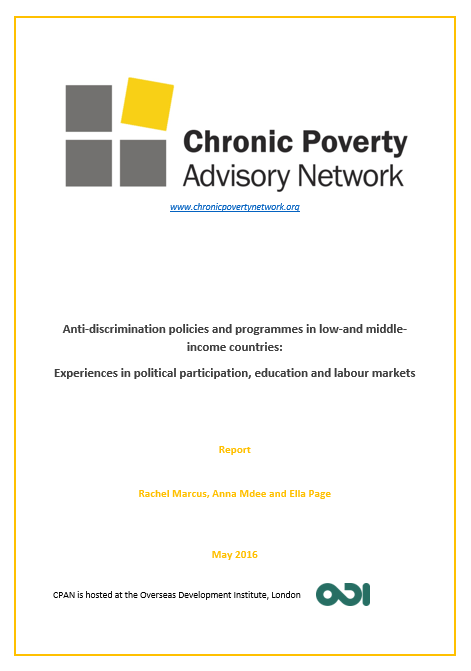Discrimination – on grounds of gender, against particular ethnic groups, on grounds of age, caste, disability or religion is a violation of human rights worldwide and an important factor contributing to the high rates of poverty among many discriminated-against groups. This report breaks new ground by synthesising evidence from a rigorous review of evidence from low and middle income countries that explores the following key questions:
What evidence is there concerning the effectiveness of large-scale anti-discrimination policies and programmes for different social groups?
Are anti-discrimination policies and programmes more effective for some social groups than others? If so, why?
How far and in what ways have anti-discrimination policies and programmes contributed to reducing poverty among the poorest people?
It identifies four key strategies for reducing discrimination: legal change; attitude change; quotas and reservations; and social investment programmes, both broad-based initiatives and programmes targeted at particular groups, and explores evidence of the impact of these approaches through large-scale initiatives in the political arena, education, and labour markets.
The study makes use of a multi-dimensional conception of poverty, which includes economic aspects such as income and assets, capabilities such as health and education, and control over one’s life, such as power or powerlessness.4 It set out to examine evidence concerning how far anti-discrimination measures have impacted on any of these areas, or proxies for them.
Click here to download the full report
Authors: Rachel Marcus, Anna Mdee and Ella Page
This review was commissioned and funded by EBA.



